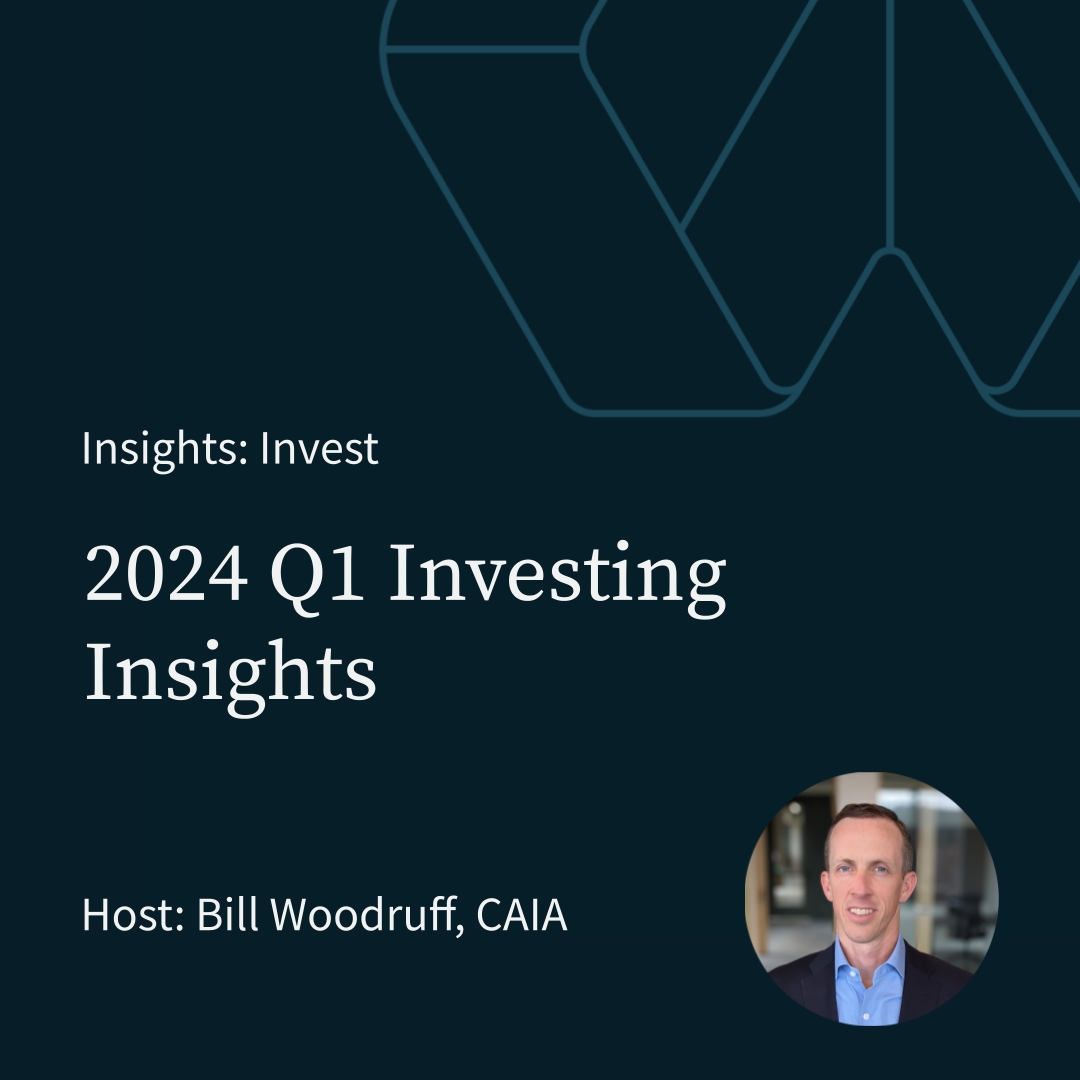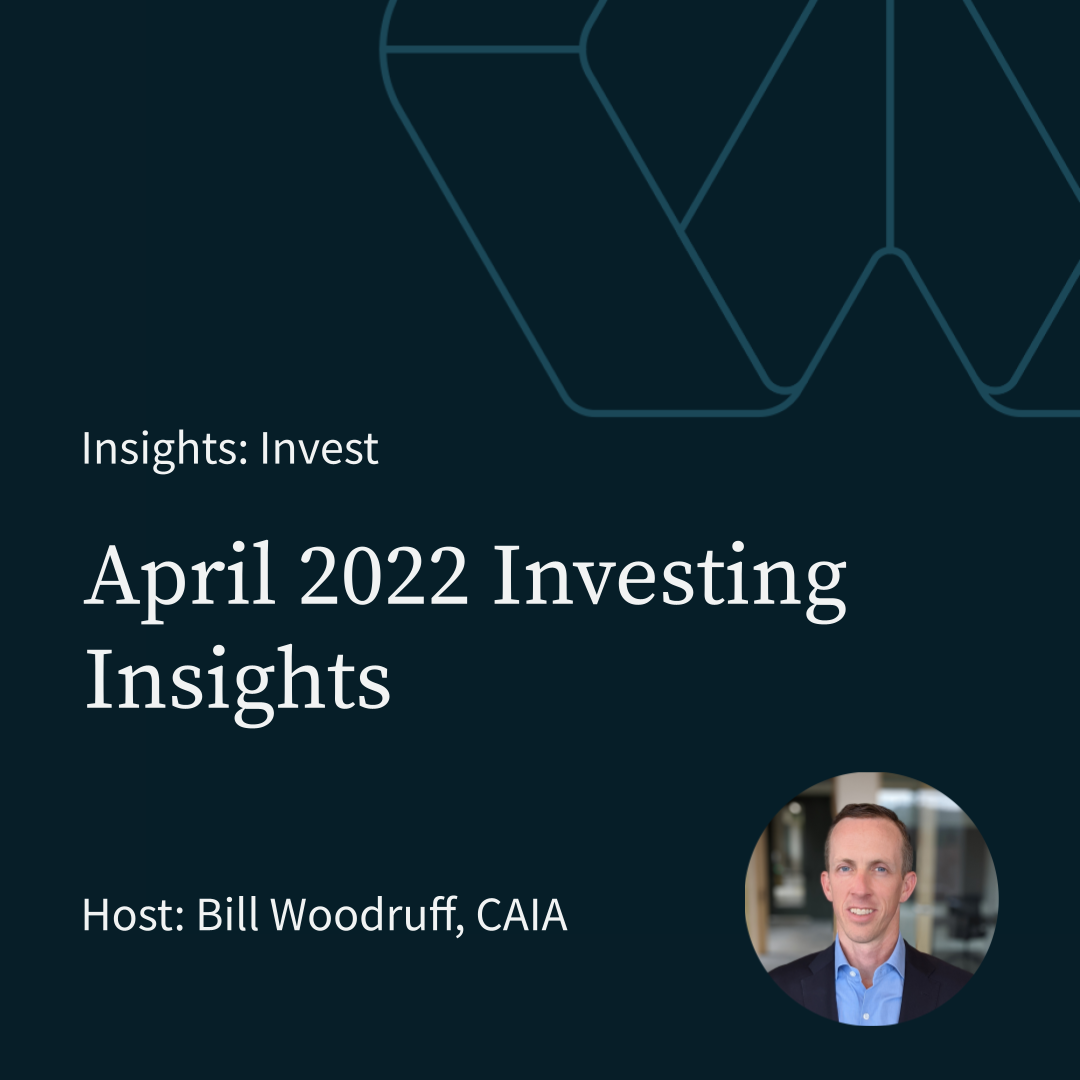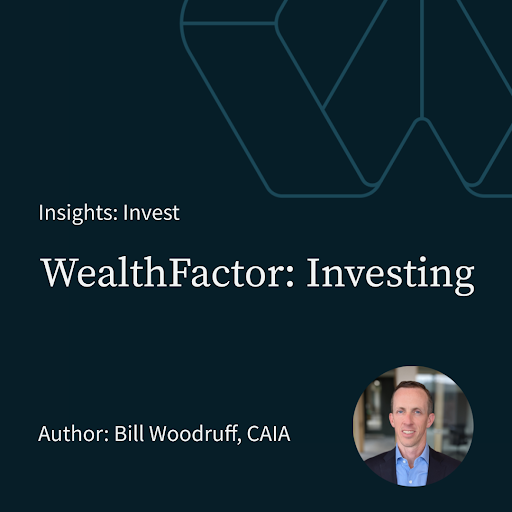Webinar Replay: An Introduction to Direct Indexing
SUMMARY KEYWORDS
portfolio, indexing, s&p, index, investors, direct, investing, mutual fund, layers, companies, factor, perspective, statements, smart, tax, positions, etf, costs, average, fee
00:00
Good afternoon. My name is Bill Woodruff. Today, I am going to share a introduction to direct indexing. Before I get too far in a few words for compliance purposes, this call is for informational purposes only, and maybe recorded statements made during this call or the opinions of the speaker and are subject to risks and uncertainties, some of which are significant in scope. And by their very nature beyond the control of wealth factor, there can be no assurance that such statements will prove to be accurate in actual results in future events could differ in a material way from said statements. Historical results are not necessarily indicative of future performance. So for those of you who don't know me, I founded well factor in 2017. I've been investing and managing Investment Partners Lawyers for over two over two decades now. In a variety of capacities, started out doing trading and portfolio management for a Portland based alternative asset manager. I had the opportunity through that experience to launch my first business which was Bandon Capital Management. And through that launch day mutual fund,
01:26
sold that mutual fund business line to the public company fortress Investment Group and join them for a period of time ultimately fairly disenchanted with what I saw from a service offering to the end investor decided to launch wealth factor which is my goal to offer a better and more efficient way to invest and receive investment advice. WealthFactor is a Lake Oswego based investment advisor we manage custom, plan focused portfolios, those portfolios are typically based on indices, and are typically comprised of stocks and or bonds. We have our clients portfolios held in their name at third party and independent custodians.
02:19
holistic investment advice and management services, we charge point three 5% on the first 10 million and point 1% on assets over 10 million. We also offer our direct indexing methodology at point two 5% on assets currently, with the modest minimum of 250,000 to provide that service, that service is a what I would call it advice light, where we're not providing our holistic set of support and advice. From a portfolio perspective. Risk smart is the basis For, well factor philosophically, and there are three core components to that portfolio smart, which in concept is really more about what you avoid avoiding picking, timing, layers and complexity. It's my belief that those things don't typically add value relative to the time energy and most importantly, the fees or costs associated with those activities. fee smart. A big part of that is the structure in which we charge fees and then our removing of layers and extra costs. And then lastly, as tech smart, the this is going to be us focal point for today. But really, investors give up opportunities to control their individual tax situation, when they use funds, mutual funds, especially but also ETFs or exchange traded funds to a certain degree. So what is Direct indexing? Well, I think about the world in terms of how do we get to our investments. And I think about it in terms of delivery vehicles that are at the highest level. And so I look at direct indexing as a form or way to get exposure to an index of underlying investments. And so, historically, most investors would do this through either investing in a mutual fund or an ETF or exchange traded fund. So I look at direct indexing at the highest level as really a delivery vehicle or an engine to get those exposures and, and there are advantages and disadvantages to all three of these. The biggest disadvantage to direct indexing remains incremental size in which it makes sense to to build portfolios from a history perspective that's changed radically in the last few years as technology continues to develop. And then also trading costs continue to fall, the size in which a portfolio needs to be for it to be for it to make sense relative to the benefits has dropped dramatically and continues to drop and is the driver behind our willingness to provide a direct index based portfolio to an investor with a level as little as 250,000. Just five years ago, it really didn't make sense to do it at even $5 million in some situations. So we've come a long ways from it from a technology perspective. Yet the average advisor is not deploying, typically these sorts of tools in terms of implementing solutions for their clients. We're certainly seeing it more and more of that they tend to be outsourced, which in my view is a effective way So what's the case for direct indexing? Well, the there's a There are a variety of elements here. But control is a big one. So by removing, so first of all, you remove a layer. If you're directly investing in owning the underlying stocks in an index, you now no longer own an ETF or a mutual fund or a layer between you and your investments. This may or may not reduce costs, as many indices have approached, management fees have actually zero. But more importantly, it improves your control. And the biggest area of opportunity here is in tax and allows you very explicitly to defer gains, or proactively harvest losses to optimize for your specific tech system. Additionally, from a customization perspective, portfolio, direct indexing
07:08
allows for customization. For example, tilting a portfolios. composition of the underlying to dividend oriented or paying positions is one example of what you can do. Additionally, it's it's not difficult to filter out or screen for those types of companies that are not environmentally or socially responsible. Should that be something that's important to you. The last thing I'll spend time on today, I'm going to intentionally keep today very brief, and we'll likely spend future web presentations digging a little deeper into direct indexing is what I see as the average portfolio for the end investor. I continuously hear a well known and notable investor such as warranted As an example, encourage the average investor to invest in the s&p 500 index. Yeah, we still see investors not do that or hire advisors who then build portfolios that track very closely to the s&p 500 index, and, and ultimately have large, overlapping consistencies with that index. And so I put together some information that both kind of pertains to how I might approach synthesizing and building a direct index based portfolio and then also kind of shedding light into why investors really shouldn't overpay an investment advisor who's really doing something that ends up being very cookie cutter and highly correlated to the s&p 500 index. And really, oftentimes with layers in vehicles that are far less tax efficient than a direct indexing based implementation.
09:03
the s&p 500 it's easy to get access to those companies and the weightings of that. And so I did some quick analysis that I found to be pretty interesting. So 500 total positions, there's actually just a few more than that currently, that changes a little bit over time. But in the top 10 Holdings, or the top 10 Holdings comprise 26% of the portfolio, and that kind of went down to that. So the top 100 or so 100 out of 500 positions comprise 75% of the portfolio. And then what I also found interesting was the bottom 300 are the 300 smallest companies in the s&p 500 on average are only about point oh 5% of the portfolio. So what does this mean? It means that when you're investing in the s&p 500 and I think again, this this translates across, really most investors average experience, your portfolio is largely exposed to You know, a fairly limited number of positions in material way. And then the diversifying elements, whether that be small companies or non US companies or whatever else from an equity composition perspective really get de minimis really, really quickly. And so. So if you looked at, say, your average portfolio, if you put together oftentimes an advisor puts 15 mutual funds in there, you know, if you took an aggregated all those holdings, and then compared it to the top 15, which I list here in the s&p 500, the probability that you own all those in a fairly material percentage is really, really high. So that's a bit of a case for why index based investing and the fee and tax efficiency elements are, are strongly and supportive of the concept of direct indexing. I will leave it there for today. In early June, we'll be hosting our call, which will summarize what happened in financial markets in May. And then, shortly thereafter, we'll be likely following up in in terms of the content share today on direct indexing and or our Smart Investing.
https://www.wealth-factor.com/disclosures-and-disclaimers










